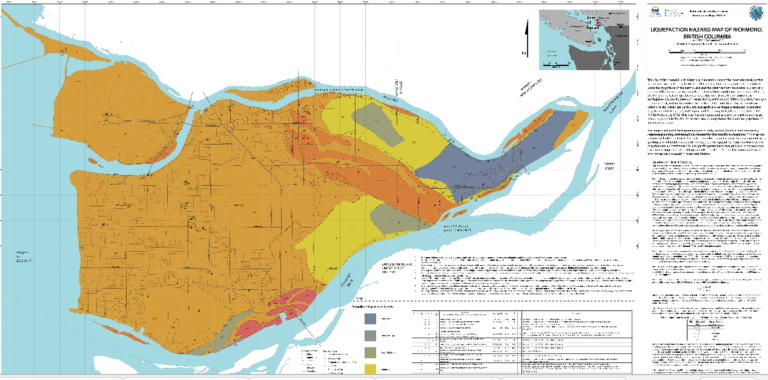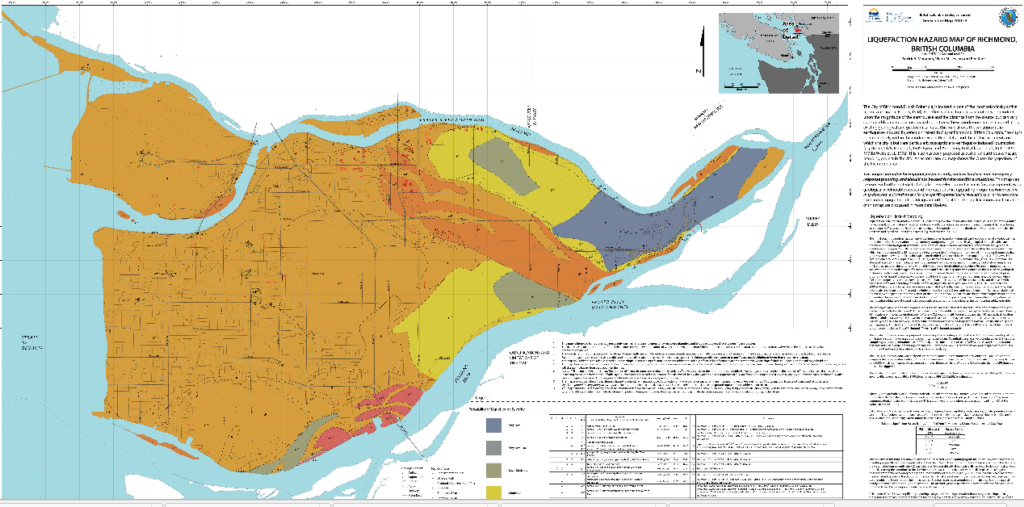A Bridge over Trouble
A cable-stayed bridge over the Fraser River and a big earthquake could make for massive problems
Daniel Wood is an investigative journalist uncovering the truth behind the Massey tunnel replacement
For those hoping to halt the export of thermal coal from the lower Fraser River, it’s useful to consider a century-old American spiritual song that illustrates an essential principle:
The toe bone’s connected to the foot bone. Foot bone connected to the heel bone. The heel bone connected to the ankle bone.
In the case of thermal coal, nothing will stop this export project without connecting it to:
a) the removal of the perfectly good Massey Tunnel;
b) the construction of a $3.5 billion, cable-stayed replacement bridge over the Fraser;
c) and the subsequent dredging of the river to allow bulk carriers and supertankers upriver to service the import/export facilities proposed for the new Fraser River economic zone.
If these three things do not happen, massive bulk shipments of American thermal coal will not happen either.
So where are the weak points in the Port Metro Vancouver strategy to industrialize the Fraser estuary? Where is the plan most likely to fracture? There are, in fact, a lot of weak points. But here’s an important one that few know about, and which could cripple the entire Massey Tunnel/ Bridge Replacement Project (MTBRP).
As Richmond City Councillor Harold Steves explains to me while we chat on the Fraser River’s Richmond river bank — at the precise site of the proposed bridge’s northern tower — there’s a reason former Social Credit premier W.A.C. Bennett opted to follow engineering advice in the late 50s, and agreed to put a tunnel under, instead of a bridge over, the river.
This is because there’s no bedrock there upon which to base a bridge’s massive towers. And Steves hands me a colour-coded map of Richmond labelled ‘Liquefaction Hazard Map of Richmond.’ (Liquefaction is the action of soil turning to oatmeal-like mud during severe earthquake vibrations.) In a scale from light yellow through orange to bright red, it shows that all of Richmond has been built on liquefaction-prone sediments deposited over the millennia by the Fraser. Most places are orangish. But a one kilometer-long riverside crescent is bright red, indicating it is most prone to liquefaction. And that place is exactly where Steves and I stand, and where the bridge’s 75 meter-high northern tower would go. Solid bedrock lies beneath 600 metres of alluvial dirt.

Liquefaction Hazard Map for Richmond, BC
Says Steves, “If liquefaction happens, the bridge won’t actually fall down. But it will — just as tall buildings do in big earthquakes — shake. It could affect the tension of the bridge’s steel cable-stayed support.” He laughs at the irony that BC Liberals want to remove a free, perfectly good, seismically upgraded (2006) tunnel — said to be good for 50 more years — and replace it with a massive, 3 kilometer long toll bridge that could, in a big earthquake, be rendered unusable by the effects of liquefaction. “They want to put a big bridge here?” he says of the BC Liberals, shaking his head at the project’s riskiness. “They say the tunnel is a seismic danger. That’s just an excuse to remove the tunnel and dredge the river for bigger ships. It’s the bridge that’s the real seismic danger.”
This seismic reality makes the engineering work of designing a massive bridge to withstand earthquakes in alluvial soil more complex than a structure — like the Port Mann Bridge — built on bedrock. (It also makes the cost of building such a vulnerable bridge more expensive.) Numerous shock-absorbing tactics are employed to mitigate lateral and vertical waves that are transferred from soil to tower to cables as a powerful earthquake’s vibrations move through the earth. But unlike the Massey Tunnel which is designed to act in a flexible, snake-like manner, undulating as earthquake waves move past it, a stiff bridge tower — with its enormous weight and small footprint — will sway, particularly at the top, where the steel cables supporting the bridge deck run. Depending on the proximity and strength of the quake, depending on the type of ground waves it generates, and depending on the amount of liquefaction that occurs beneath the bridge’s towers, a big quake could play havoc with the taut geometry of the cable-stayed Massey Replacement Bridge.
Unlikely, yes. Impossible, no.
In 1872, a powerful, 7-point earthquake in northern Washington state sent waist-high ground waves through then-sparsely populated Fraser Valley farmland. In the year 1700, a humongous 9-point subduction earthquake rocked all of southwestern B.C. Another Big One is inevitable.
The survivability of a huge and hugely expensive new Fraser River bridge is not certain.
All the more reason to cast a ballot this election for a party who won’t count this bridge as a done deal.
Want to read more? Check out the rest of this blog series at DogwoodBC.


The Port Mann bridge is not built on bedrock (Golder, H. Q., Willeumier, G. C. Design of the Main Foundations of the Port Mann Bridge. Engineering Institute of Canada, 1964.) but it is built on stronger material than that found in the Massey bridge boreholes.
We’ve known that for about 70 years. Christy Clark is trying to build monuments to herself and has been paid off very handsomely to get large ships up the Fraser. The Fraser River has the largest wild salmon run in the world. Our wild salmon would be destroyed. The Fraser would have to be dredged every week to get large ships to the Fraser Docks in New West because of the silt that washes down. We should add another lane to the tunnel. The Fraser is very silty as far up as McBride. McBride is within 100 miles of the head of the Fraser. The Fraser is not a clean green river. Too much silt. The tunnel has to be cleaned out all the time. That’s how the “dunes” in south Richmond are made.
The coal from the US and eastern B.C. is brought in by rail via White Rock and Langley. It’s off loaded in New Westminster and put on barges. The barges are taken by tugs to the deep water port on Texada Island. I think that works.
Bedrock is estimated to be 2 km’s down. That’s why we have a tunnel. Richmond is built on dyked reclaimed land. Silt liquefaction is always a very serious threat in an earthquake. Richmond would be ….. gone.
I am very troubled by the idea of constructing that bridge—it must not happen